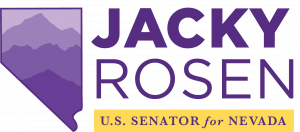WASHINGTON, D.C. – Today, during a hearing of the Senate Committee on Health, Education, Labor and Pensions (HELP), U.S. Senator Jacky Rosen (D-NV) questioned Dr. Consuelo H. Wilkins, Vice President for Healthy Equity at Vanderbilt University Medical Center on how to help Nevada’s Latino community, which has been one of the most impacted during COVID-19. They also discussed the importance of continued access to preventive care during the pandemic. A transcript of the Senator’s full exchange can be found below, and a video of the Senator’s full exchange can be found aquí.
ROSEN: Thank you, Chair Murray. This is a really important hearing. I appreciate the witnesses for your important work. I want to build a little bit on what so many of my colleagues have already been talking about – Latino community access. Our Latino community in Nevada has been the hardest hit by COVID-19. Latinos make up roughly 30 percent of our state’s population, but they’ve been impacted and account for well over 36 percent of the COVID-19 cases, nearly a quarter of the deaths.
Fortunately, local partners in the community, they really stepped up in a big way to assist the City of Las Vegas, and we recently partnered with the Mexican Consulate to host a vaccine clinic equipped with bilingual staff to vaccinate over 250 of our most vulnerable Latino community residents. I am pleased with Governor Sisolak and so many elected officials that have made it clear that COVID-19 will be free to all Nevadans who need them.
Dr. Wilkins, what more should we be doing to ensure that members of our Latino communities, and all underrepresented communities, not just in Nevada but across the country, understand that the vaccines are safe, effective, and free. And how do we get the public health messaging out there for them? How do we do that?
WILKINS: Thank you, Senator, I think the key is that the actions need to be at the local level. We have to find ways to bring in the voices of individuals from local communities to help develop these strategies, plans, and messaging. We are still talking about very heterogeneous groups of people. What works in one setting, system, town, or state might not work everywhere.
You have to understand, and I am sure you know your communities – what they need, what their priorities are, but also what are the communities’ assets. I think that is something we often miss. We keep talking about communities that are disinvested and deprived, but there many assets and resources in communities that we have not been able to leverage. Bringing the voices of those in to tell us who are the trusted organizations and who are the trusted community leaders, who can actually deliver the message in a culturally appropriate, relevant way that addresses the concerns, the myths, and issues that are circulating.
How do we actually get that to again to places, vaccines, and information to places where people already live, work, play and pray. It also has to be in languages that people speak and understand. Their many different dialects, even of Spanish and understanding again what that looks like and how the messaging, images, videos, and brochures what that should look like is very important.
ROSEN: I agree with you. In Las Vegas, over 180 students from our UNLV School of Public Health partnered with our health district to provide culturally competent contact tracing in over 27 different languages. We have one of the fastest-growing AAPI communities in the country. So really working on this is critical to improving outcomes.
I quickly want to move on to delayed care during COVID-19, which we also know is an issue even before the pandemic. Particularly in our minority communities, they were already experiencing unequal levels of medical care. In Nevada, we have a severe provider shortage, and now a year into COVID, I have heard from providers who have patients who are still scared to come into the office to receive their cancer treatment, preventative health care, mammograms, or prostate screenings. In Nevada, we already rank 47th in the nation in percent of women who are up to date with mammograms, 49th for people who are current their colon cancer screenings, and 44th for women of color who are up to date on their cervical cancer screenings.
So this really has long-term consequences on families right. So how can we work to increase the patient confidence and improve the access to basic preventative care to those who were already marginalized and feel increased fear due to the pandemic?
WILKINS: I do think this is where we should be leveraging community health workers, peer educators, peer navigators, and individuals who have the ability to go out into communities who have the time, and have the resources, and who are funded. They can make calls, make visits, and who actually understand beyond the fear of going in is preventing individuals from seeking care. Is it transportation needs, is it childcare needs, and what resources do they need to get that preventative care. Also, what can we provide for them to get the preventative care in their homes and in their communities?
ROSEN: I think we can see what we might be connected with them initially on telehealth and build up that trust to bring them into the office for those tests or wherever those tests are provided. I think we can do as much as we can there. Thank you, my times expired.
###

